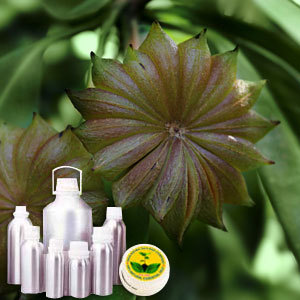Botonical Name | : | Illicium verum | |
CAS # | : | 8007-70-3 | |
Country of Origin | : | China | |
Color & Odor | : | Pale Yellow clear liquid with a Sharp, anise and licorice-like aroma | |
Solubility | : | Insoluble in water, soluble in alcohol and oils | |
Specific Gravity | : | 0.975 - 0.992 @ 20 °C | |
Optical Rotation | : | -2 to +2 | |
Refractive Index | : | 1.5525 - 1.5600 @ 20 °C | |
Flash Point | : | 83°C | |
Major Constituents | : | Anethole | |
Plant Part Used | : | Seeds | |
Extraction Method | : | Steam Distillation |
DESCRIPTION:
Star Anise Oil which is derived from specific evergreen tree that hails from magnolia species of trees, is considered as one of the most healthy oil. It is used as an important ingredient for producing disinfectants. This oil resembles licorice in terms of flavour. CONSTITUENTS:
This oil contains compounds like methyl chavicol and (E)-anethole (approx. 90%). AROMATIC SUMMARY / NOTE / STRENGTH OF AROMA:
The top note long lasting smell reminds about the aroma of licorice. BLENDS WITH:
Star Anise essential oil can be mixed with the essential oils of orange, clove, cinnamon, rosewood, pine and lavender. COMMON NAMES:
Star Anise Oil is commonly referred as Pimpinella anisum L oil. USES:
Star Anise Oil is widely used as suitable antibacterial factor and expectorant. The special content of this oil has beneficial effects on secretory cells located in respiratory tract. Pure Star Aniseed Oil often becomes solid. In case the oil becomes solid, one can apply heat to recover its liquid form. 


































